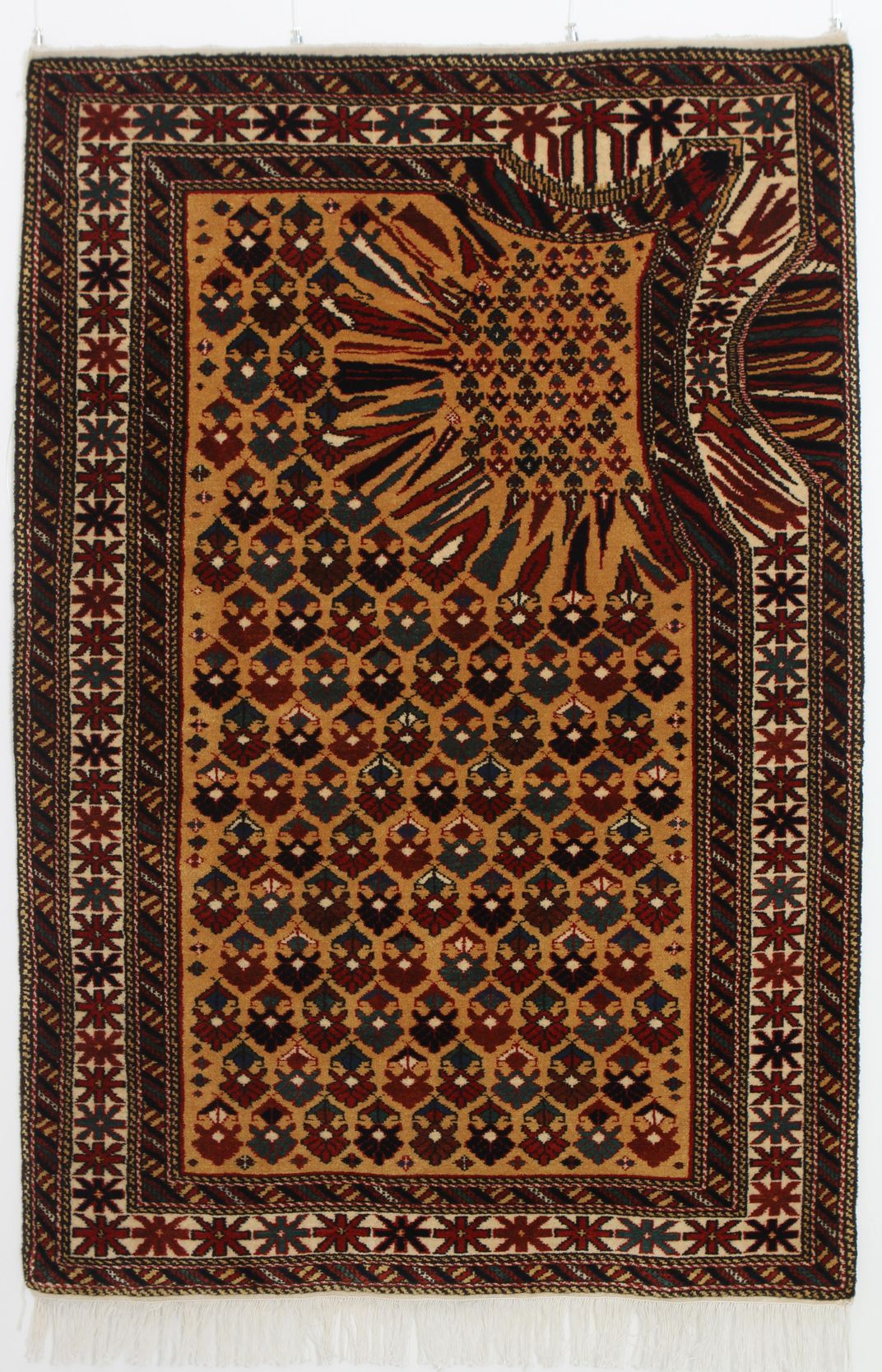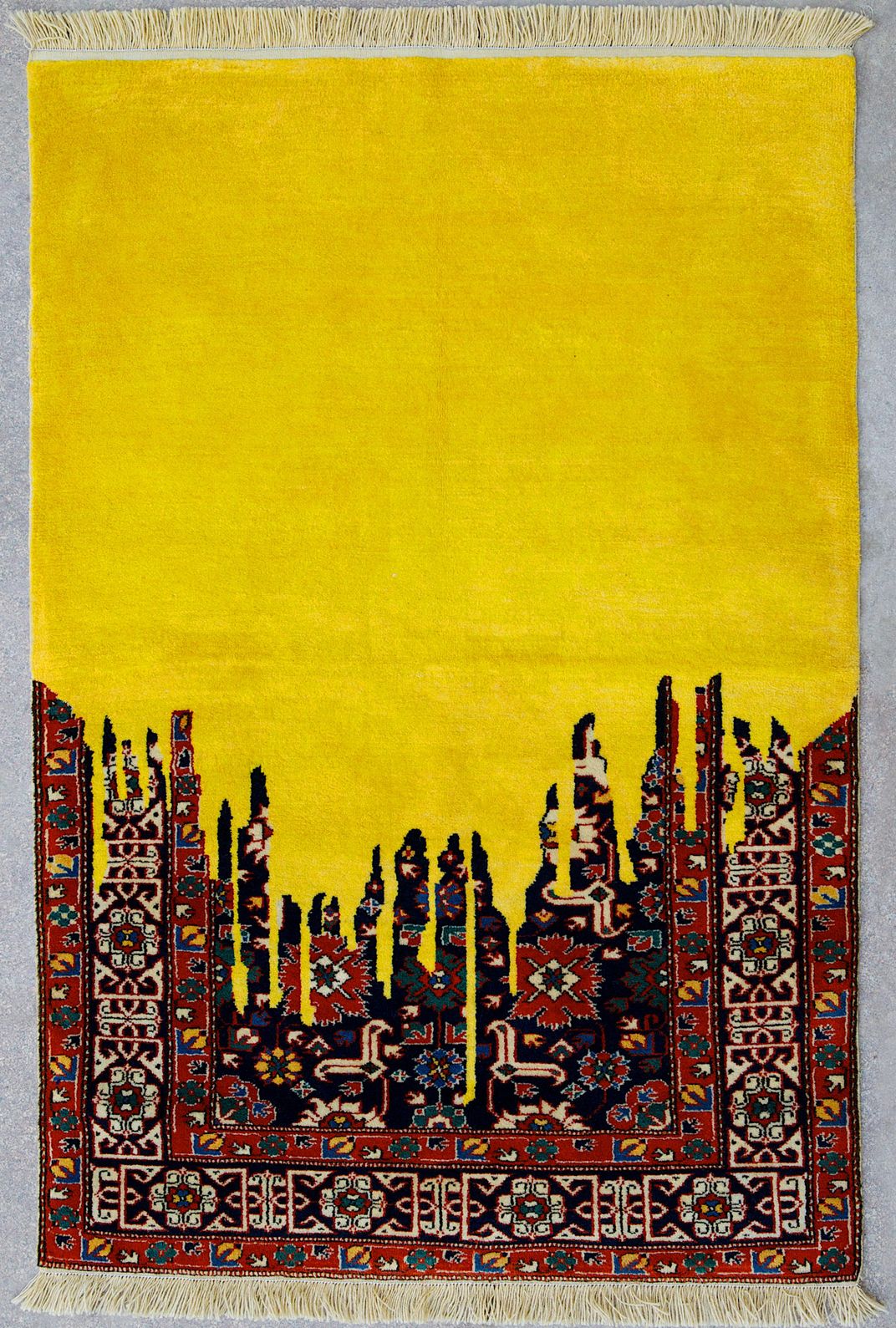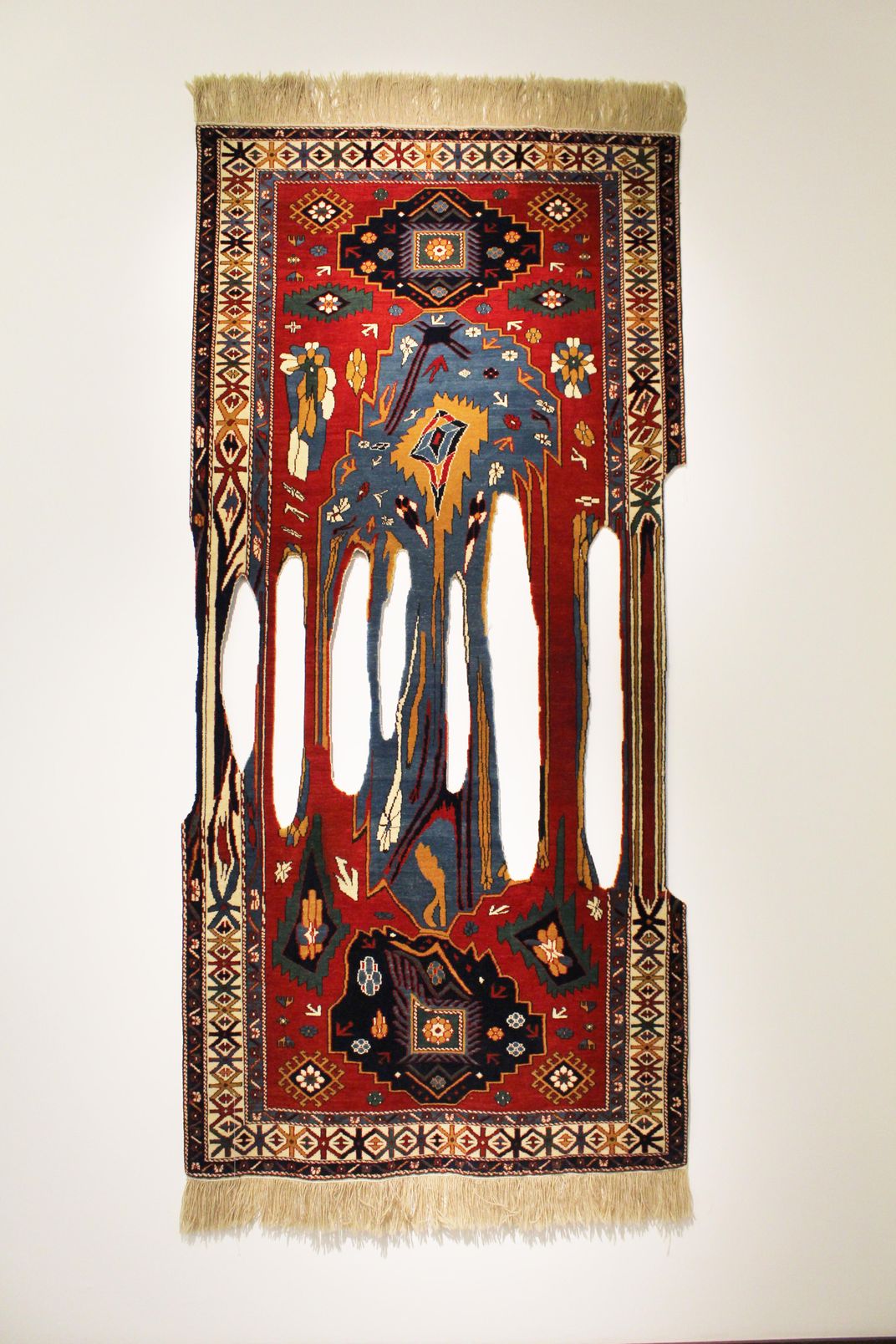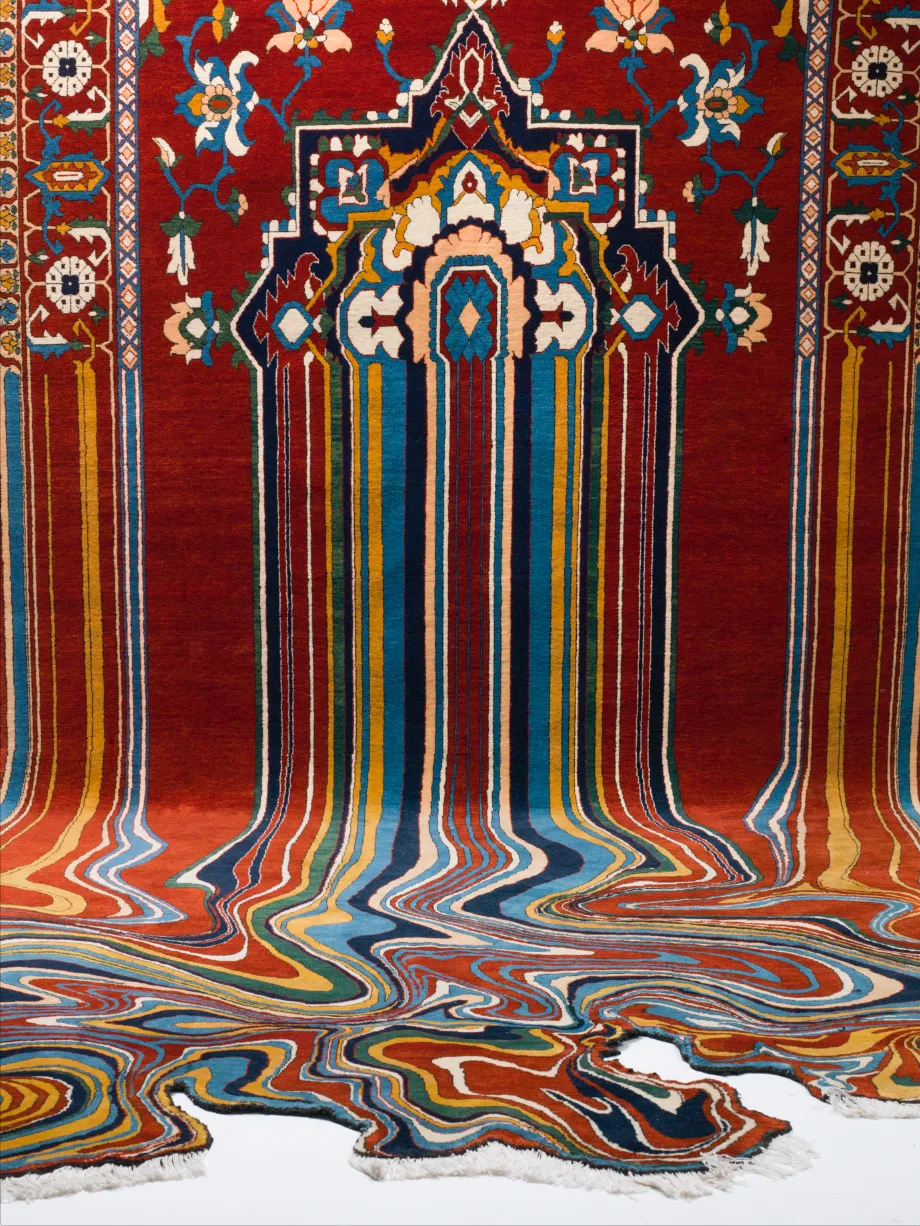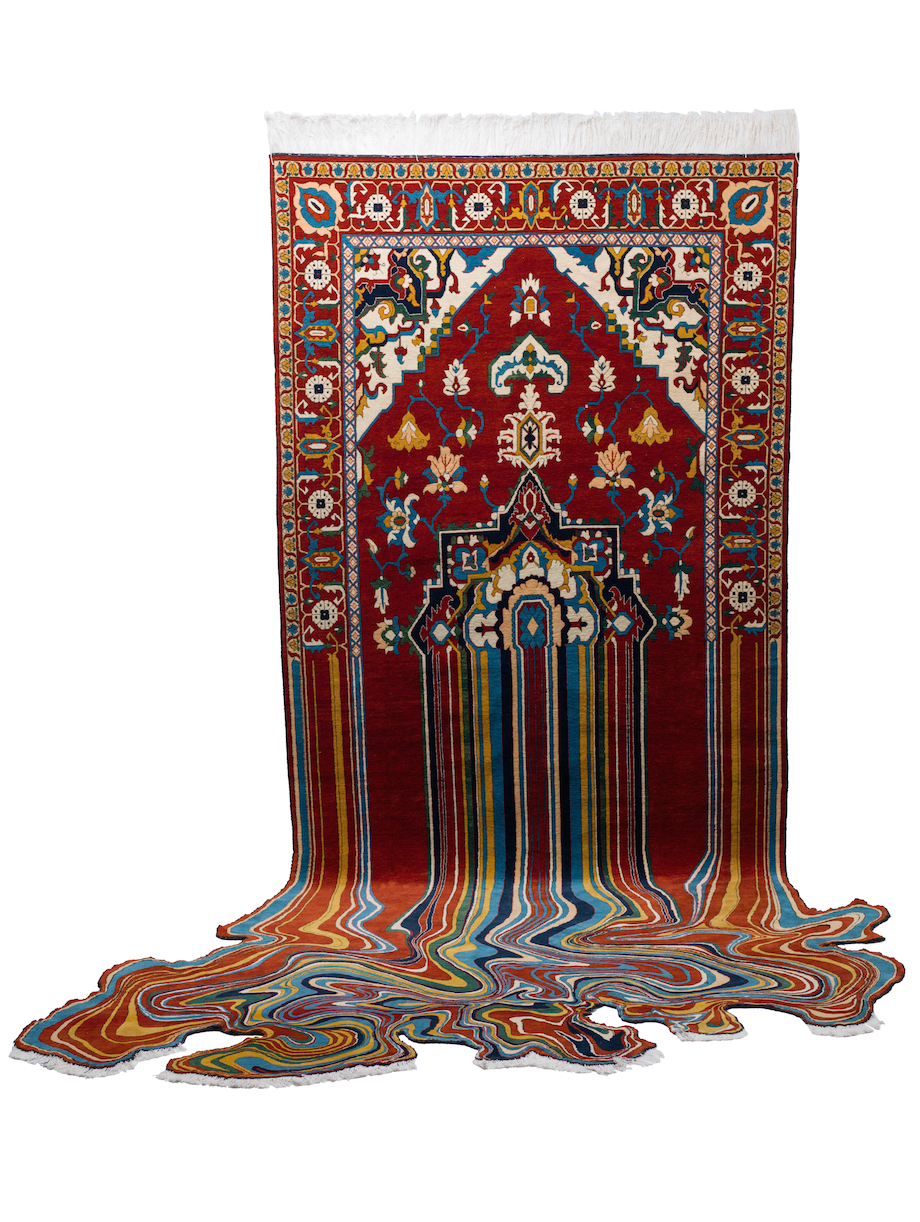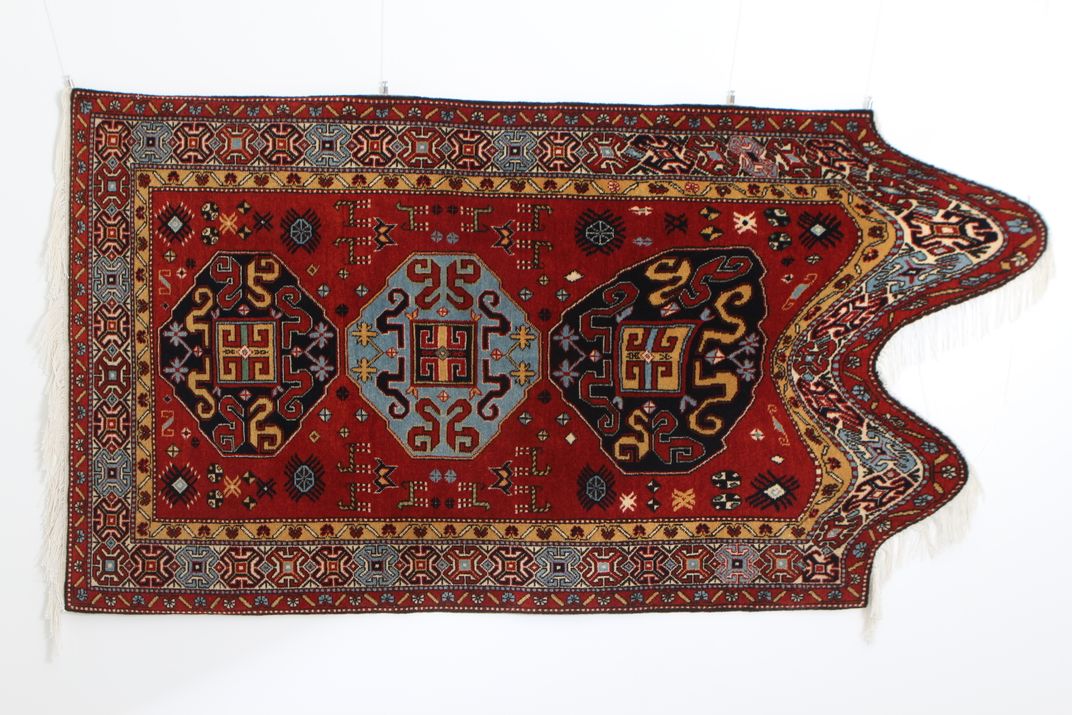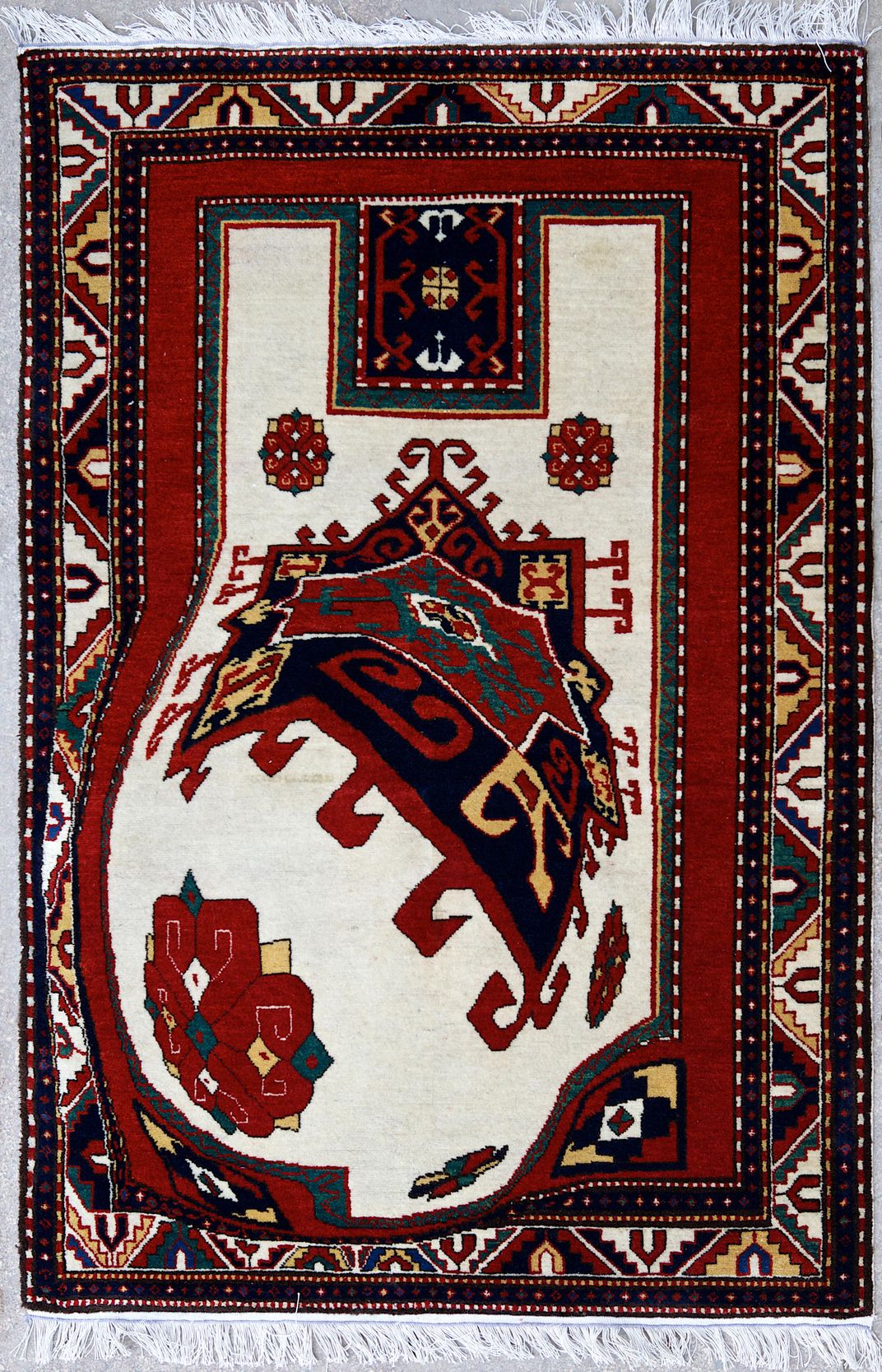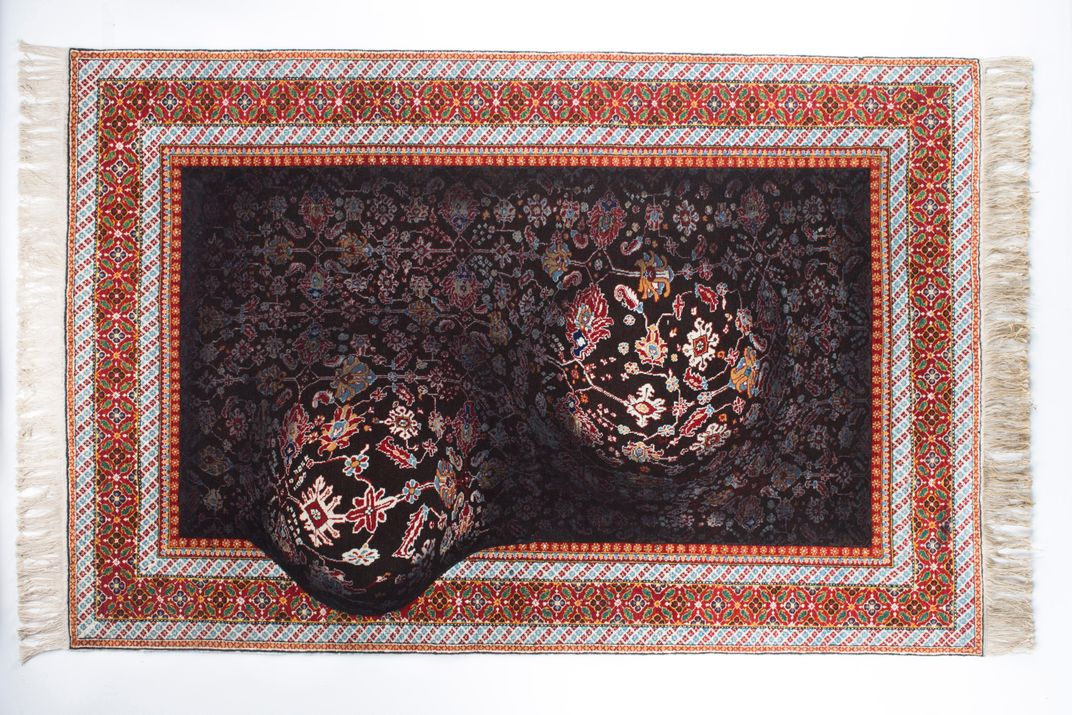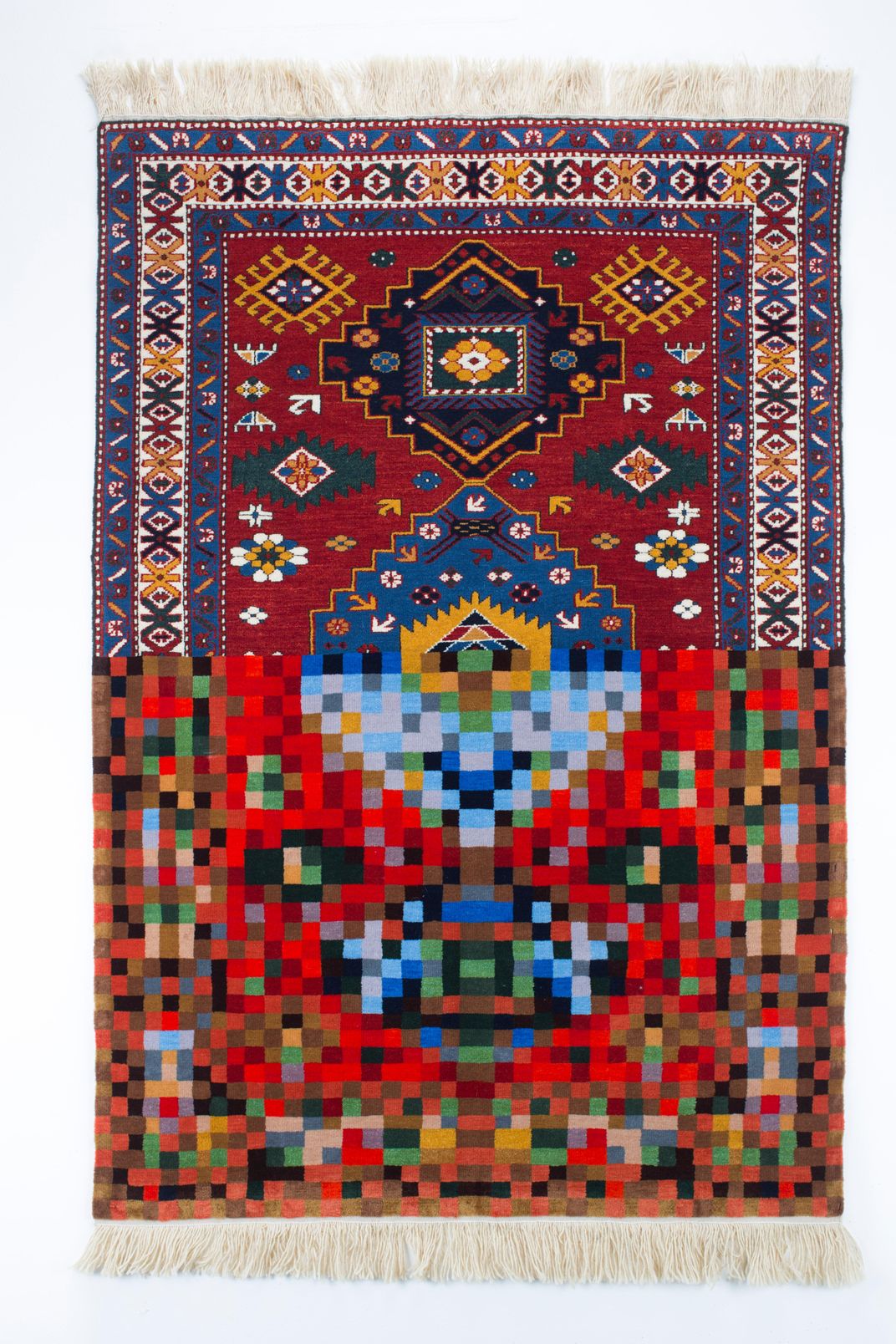This Artist Makes Traditional Carpets That Look Like They Were hit by a Software Bug
Faig Ahmed’s Azerbaijani carpets twist and swirl like a bad Photoshop job
/https://tf-cmsv2-smithsonianmag-media.s3.amazonaws.com/filer/2e/40/2e40262b-c77a-4ddc-954b-2f5b5d29181c/outflowfaig_ahmed_2014_image_courtesy_of_faig_ahmed_studio_775_mb.jpg)
At first glance, Faig Ahmed’s carpets look like digital photos that didn’t load right the first time you clicked on them. Intricate patterns morph into messes of pixelation; blocks of color slide off like someone scrolled past them too fast; and some of the 2D mats look like they are bulging off a screen. But while they may appear to be software glitches or bad Photoshop editing, every one of Ahmed’s carpets are hand-woven – bugs and all.
Ahmed is an Azerbaijani artist who takes inspiration from traditional carpets made by craftsmen in his country. The artisanal carpets are made with intricate patterns and vibrant colors, both of which inspired Ahmed to begin working in textiles after years of focusing on paintings, video and installation art, Kate Sierzputowski writes for Colossal.
“Patterns and ornaments can be found in all cultures, sometimes similar, sometimes very different,” Ahmed tells Sierzputowski. “I consider them words and phrases that can be read and translated to a language we understand.”
Azerbaijani carpets are a prized around their world both for their beautiful patterns and the craftsmanship it takes to create such detailed, delicate pieces. The skills used to make the carpets are passed down through generations by family members, according to UNESCO. Traditionally, the carpets are dyed and woven in the winter by female household members who use special techniques to create intricate designs in the fabric. Carpets are often made to celebrate special occasions like weddings, a child’s birth and religious rites. Although the carpets carry much cultural significance, Ahmed takes pleasure pushing the craft's boundaries in his artwork.
“I love being a hostage [to tradition], because it’s a quiz and you have to take it to set yourself free,” Ahmed tells Lisa Pollman for Art Radar. “I think we are never completely free anyway, but you should exactly know where your own cage ends.”
To make his carpets, Ahmed works alongside a team of 20 to 25 skilled weavers who work from his designs. While some of his carpets are based on computer glitches and corrupted image files, others are inspired by watching paint drip down a wall or layering odd geometric shapes that twist the traditional designs around them. Some of his carpets even have optical illusions built into them so that from certain angles the shapes look like they are popping out at the viewer.
Right now, lucky visitors to Boston’s Museum of Fine Arts can check out some of Ahmed’s carpets in person, which will be on display through January 10, 2016.
